50+ SAMPLE Sales Checklist
-

Sales Presentation Checklist
download now -
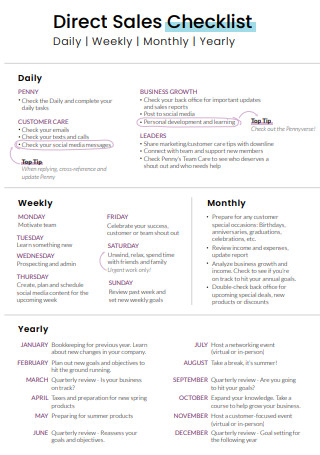
Direct Sales Checklist
download now -

Sales Disclosure Checklist
download now -
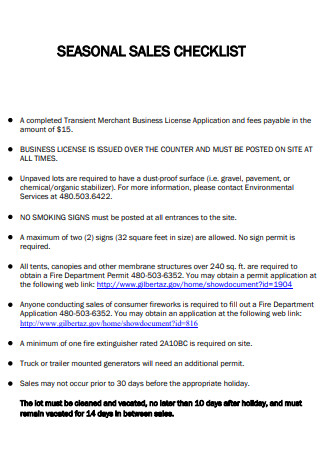
Seasonal Sales Checklist
download now -
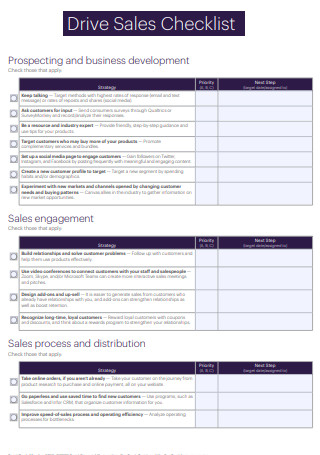
Drive Sales Checklist
download now -

The Sales Checklist
download now -
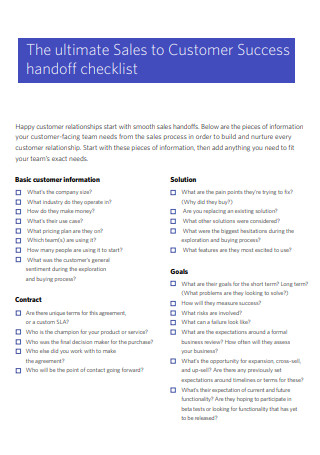
Sales to Customer Success Handoff checklist
download now -
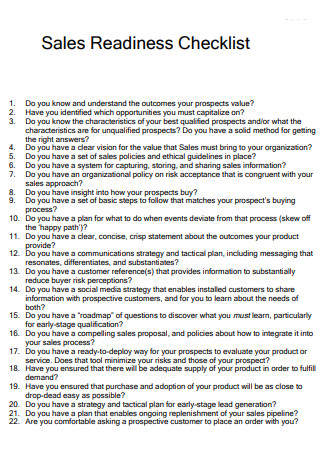
Sales Readiness Checklist
download now -
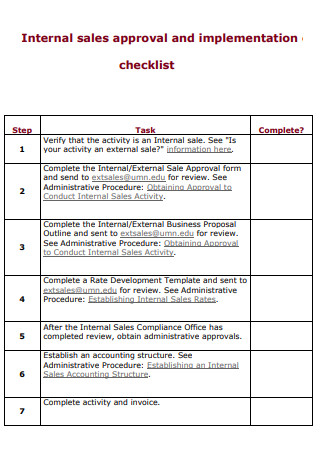
Internal Sales Approval and Implementation Checklist
download now -
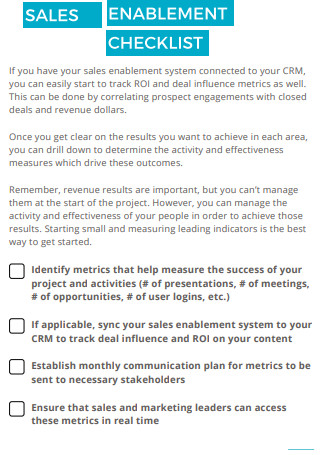
Sales Enablement Checklist
download now -
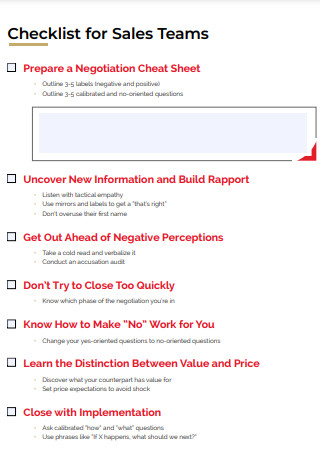
Sales Teams Checklist
download now -

Sales Contracting Checklist
download now -
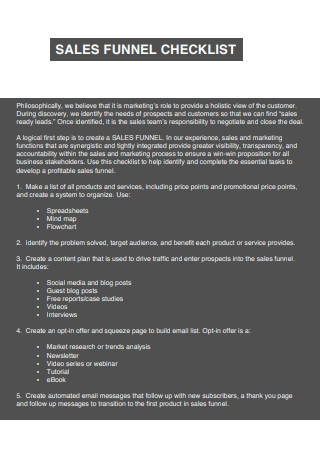
Sales Funnel Checklist
download now -
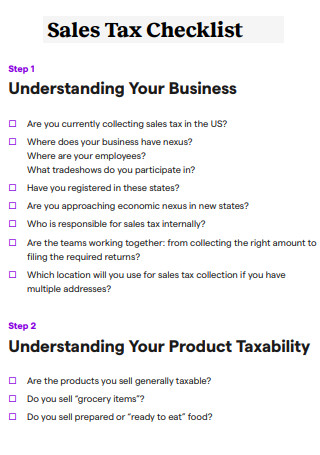
Sales Tax Checklist
download now -
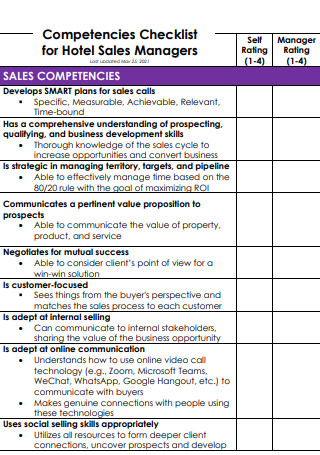
Hotel Sales Managers Competencies Checklist
download now -
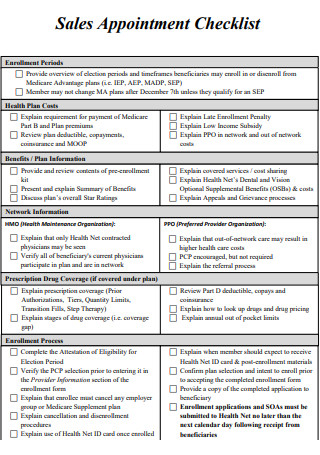
Sales Appointment Checklist
download now -
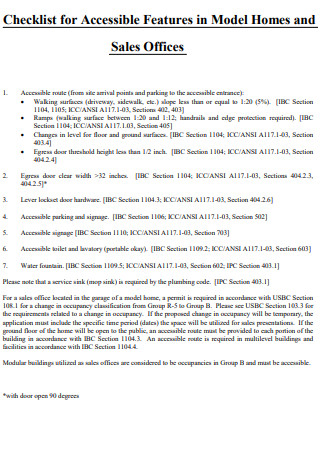
Sales Offices Accessible Features Checklist
download now -
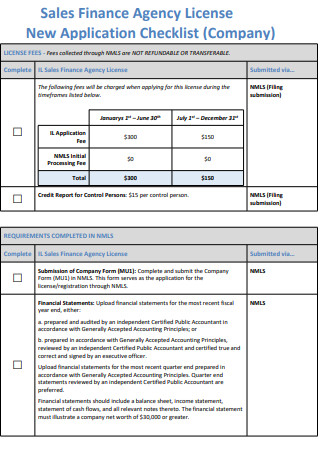
Sales Finance Agency License Checklist
download now -

Sales Tax Administration Checklist
download now -
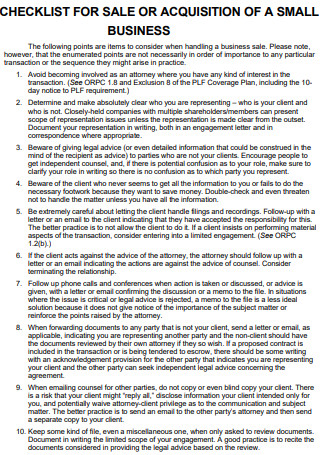
Sale or Acquisition of a Small Business Checklist
download now -
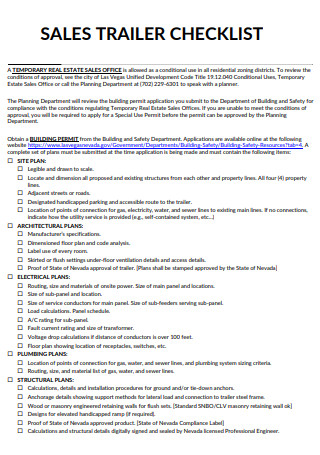
Sales Trailer Checklist
download now -
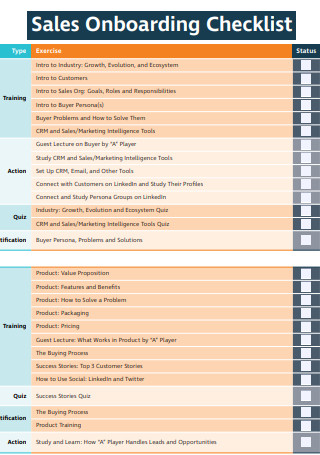
Sales Onboarding Checklist
download now -

Sales Data Submission to the Department Checklist
download now -

Sales Enablement Strategy Checklist
download now -

Sales Negotiation Checklist
download now -
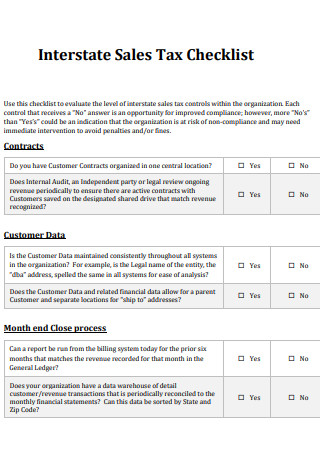
Interstate Sales Tax Checklist
download now -
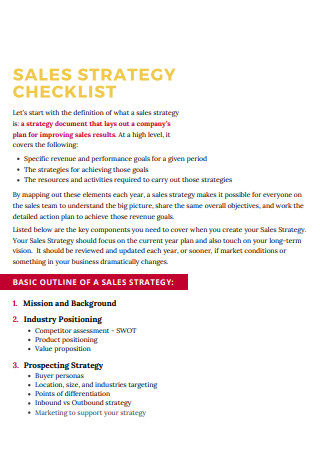
Sales Strategy Checklist
download now -
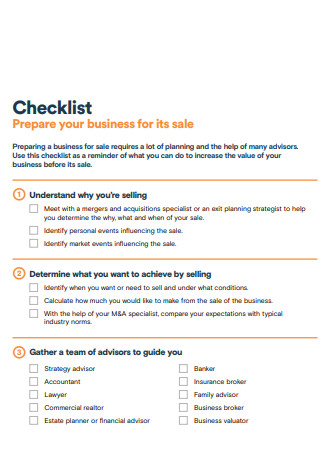
Business Sales Checklist
download now -
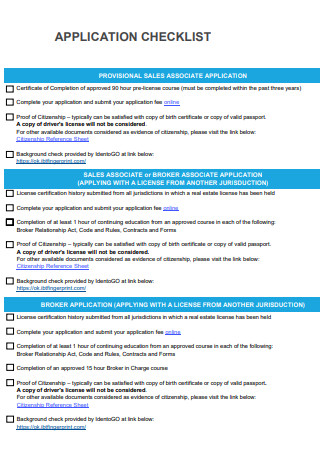
Provisional Sales Associate Checklist
download now -
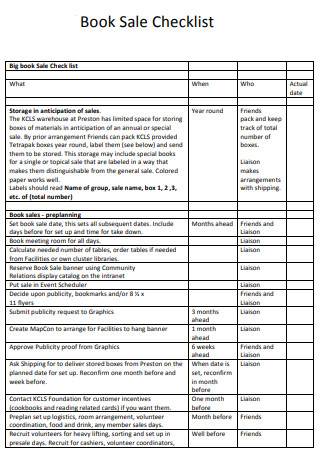
Book Sale Checklist
download now -
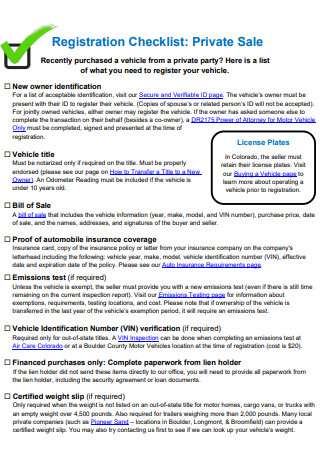
Private Sale Registration Checklist
download now -
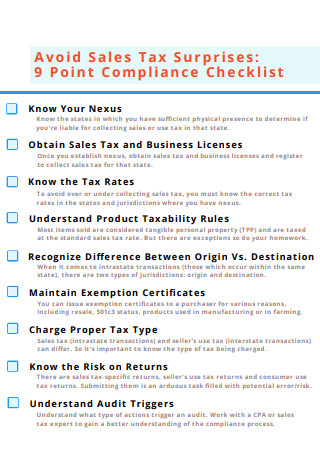
Sales Tax Compliance Checklist
download now -

Outdoor Retail Sales Checklist
download now -
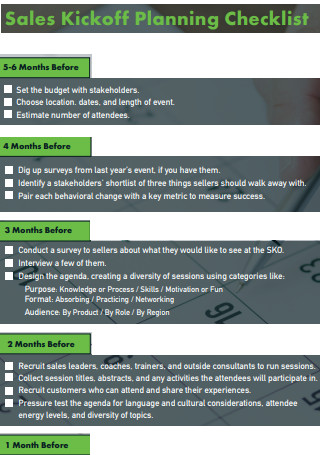
Sales Kickoff Planning Checklist
download now -
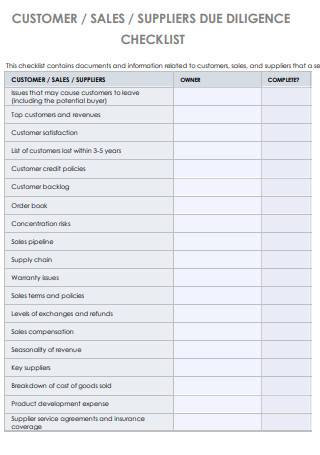
Customer Sales Supplier Due Diligence Checklist
download now -
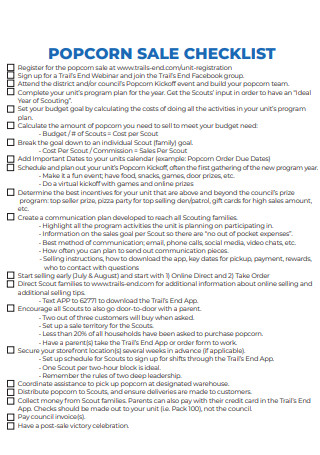
Popcorn Sales Checklist
download now -
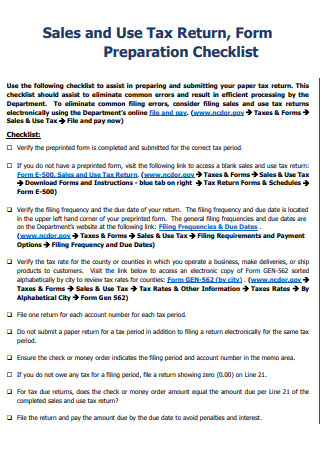
Sales and Use Tax Return Preparation Checklist
download now -
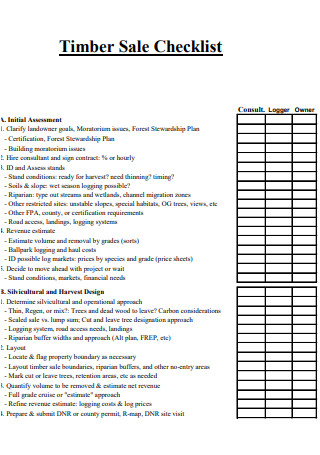
Timber Sale Checklist
download now -

Sales Locations Delivery Requirements Checklist
download now -
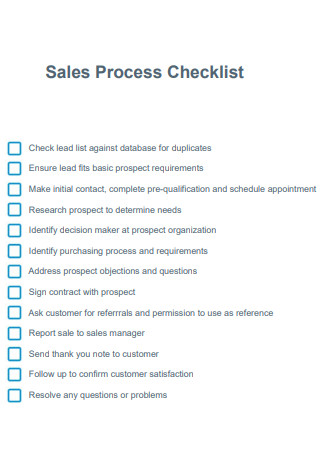
Sales Process Checklist
download now -
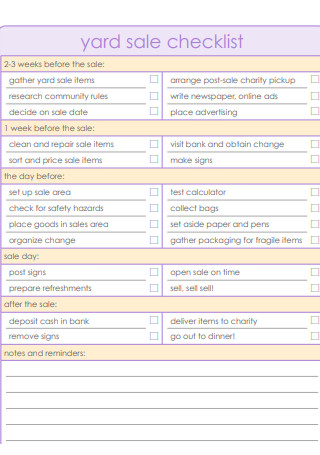
Yard Sales Checklist
download now -
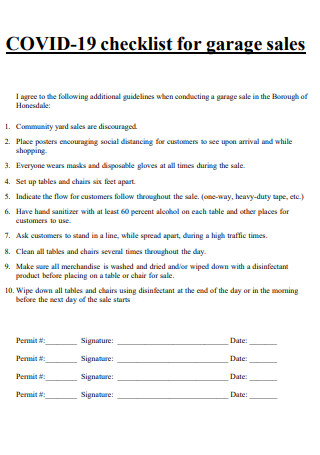
Garage Sales Checklist
download now -
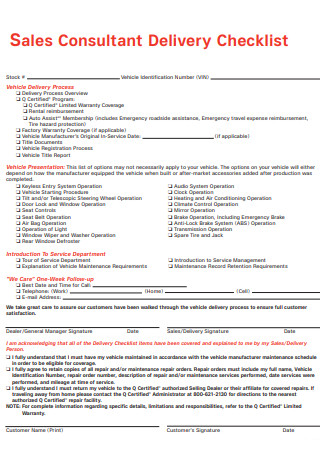
Sales Consultant Delivery Checklist
download now -
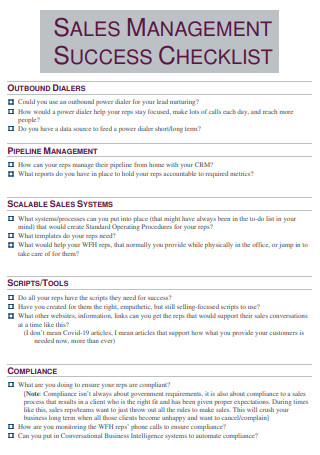
Sales Management Success Checklist
download now -
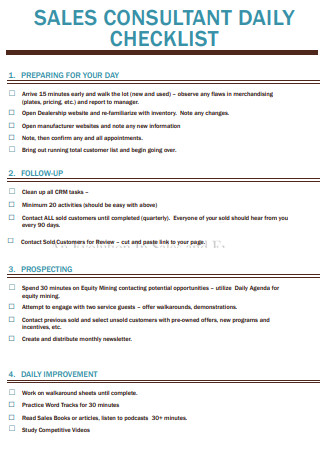
Sales Consultant Daily Checklist
download now -
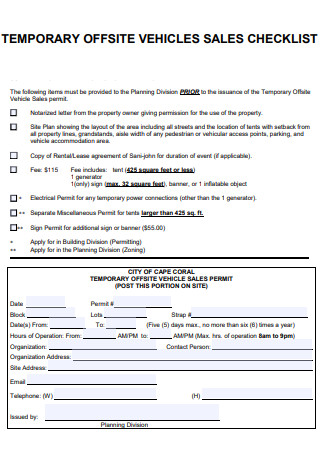
Temporary Offsite Vehicles Sales Checklist
download now -
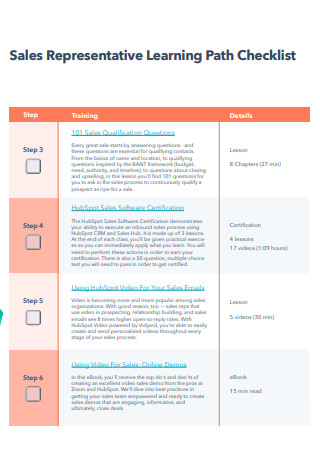
Sales Representative Learning Path Checklist
download now -
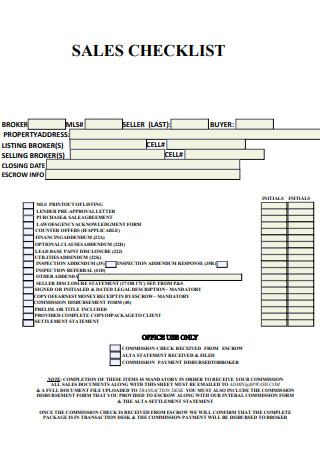
Sales Checklist
download now -
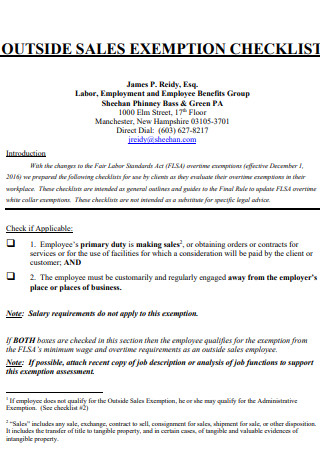
Outside Sales Exemption Checklist
download now -
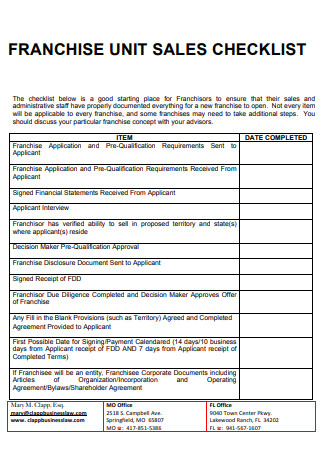
Franchisor Sales Checklist
download now -
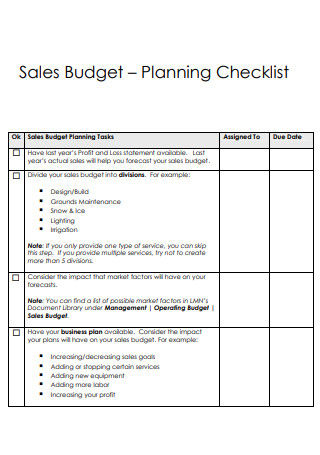
Sales Budget Planning Checklist
download now
What Is a Sales Checklist?
A sales checklist is a form of marketing plan in which the many components of a marketing endeavor are detailed. A marketing checklist can effectively track various marketing activities and features, such as objectives and tactics. According to statistics, this is the most complex stage of the sales process for more than 40% of salespeople.
Benefits of Sales and Marketing
For B2B enterprises that offer complex products to committees of decision-makers over an extended time, sales and marketing are critical. Account-based efforts are doomed to fail unless sales and marketing work in unison. Our findings reaffirm the view that sales and marketing must work collaboratively to shepherd leads and opportunities to completion. However, what is it about sales and marketing integration that improves results? The following are the seven most significant benefits of it and why they matter:
Types of Sales Process
According to most sales gurus, what are the five stages in the sales process? The following stages detail what you should be doing to attract new customers, close sales, and retain existing customers for future business and recommendations.
-
1. Prospecting
Prospecting is the first of seven steps in the sales process. This stage involves identifying potential customers and determining if they have a demand for your product or service—as well as whether they can pay it. Qualifying is the process of determining whether a consumer requires your product or service and can afford it. Bear in mind that finding a single prospect at a company is no longer sufficient in modern sales: A typical transaction involves an average of 6.8 consumer stakeholders, so you’ll want to practice multi-threading or communicating with numerous purchasing decision-makers. Account maps are a powerful tool for locating these buyers.
2. Preparation
The second stage involves preparing for initial contact with a prospective consumer by conducting market research and gathering all pertinent information about your product or service. This is the stage at which you construct your sales presentation and personalize it to the specific needs of your prospective client.
3. Approach and Presentation
You initiate contact with your client during the approach stage. Occasionally, this will be a face-to-face encounter; sometimes, it will be conducted over the phone. Additionally, you illustrate how your product or service satisfies your potential consumer’s needs during the presentation phase. While the term “presentation” connotes the use of PowerPoint and delivering a sales pitch, this is not always the case—you should actively listen to your customer’s demands and then act and respond accordingly.
4. Handling objections
Perhaps the most undervalued sales process’s seven steps in resolving complaints. This is when you listen to and address your prospect’s issues. It’s also where many unsuccessful salespeople stop the process—44 percent abandon pursuit after one rejection, 22% after two rejections, 14% after three denials, and 14% after four refusals, although 80 percent of sales need at least five follow-ups to convert. Successfully overcoming objections and assuaging fears distinguishes good salespeople from terrible and great salespeople from average.
5. Follow-up
Once the deal is completed, your job is not complete. The follow-up step ensures that you stay in touch with customers you’ve worked with, not only for potential repeat business but also for referrals. And because retaining existing clients is six to seven times less expensive than obtaining new ones.
How To Build a Sales Process
A business growth expert, Tiffani Bova, put it best: “How you sell is critical. It is critical to understand your process. However, how your customers feel when they interact with you is more important.” The sales process is more than a collection of actions culminating in a sale. It’s a method of establishing contact with prospects and customers. You’ll understand their pain points over time and will be able to suggest solutions that do their work — and lives — more accessible. This leads to increased client loyalty, steady sales, and, over time, the firm’s growth. Whether you’re a seasoned sales skilled or a newcomer to the field, the following stages will take you through a successful sale. Adjust or add steps as necessary to meet the needs of your business, product, or prospect.
-
1. Increase your product knowledge
Until recently, sales teams and subject matter experts were frequently kept apart. If a sales representative encountered difficulty responding to a prospect’s product-specific query during a sales call, they directed the opportunity to an internal product manager. Clients now want sales representatives to be intimately familiar with their products. Not only does this streamline communication and quicken the sales cycle, but it also equips reps with the wisdom and trust necessary to overcome objections. The most effective method of familiarizing your products is to review product demos, press releases, and documentation. Then employ them. Inquire developers or product managers about features, use cases, and stumbling blocks. Create your notes emphasizing notable features and the consumer problems they resolve.
2. Conduct research on your ideal candidate.
Numerous businesses develop a buyer persona that details their ideal prospect’s demographics, psychographics, and communication preferences. It’s critical to carefully study this and consider how the product you’re offering meets prospects’ problem concerns. There are numerous solutions available for gathering this data, but the most straightforward place to start is using your company’s CRM insights. If it includes built-in analytics, such as Sales Cloud, you can see where previous sales came from and basic demographic and company information about buyers. Additionally, you can collect data on purchasing behaviors, such as the average purchase frequency of purchasers, the most popular products, and moderate sale quantities. Then, devote effort to augmenting any CRM data you collect with institutional expertise. Consult with tenured sales representatives and managers about previous clients and get information about their behaviors, communication patterns, needs, and pain spots. To supplement your study, use a competitor research analysis tool to determine how your competitors acquire clients through marketing, pricing, service, and sales methods. Which techniques generate the most revenue for competitors, and how can you leverage them to generate leads?
3. Begin prospecting and generating leads.
Prospecting is the process of identifying individuals or firms who are likely to make a purchase. Begin by requesting referrals from colleague reps or industry contacts and then scouring web portals and communities for prospective prospects. Conduct keyword research on broad-reach interaction platforms such as LinkedIn, then move to trustworthy, specialty websites that candidates frequently visit for product research. If you require extra assistance, search Google for relevant keywords linked to your product or service and visit relevant websites where potential customers interact via comments or forums. This enables you to get additional data about their wants and problem spots. When you’ve identified a prospect worth pursuing, locate them on LinkedIn or ZoomInfo and get all relevant contact information.
4. Analyze the requirements of a customer
After you’ve whittled down your list of possible possibilities, conduct an in-depth analysis of the demands of those who remain. Arrange a follow-up conversation with each prospect to understand further their needs and how you may meet them. Bear in mind that 95% of customers make purchasing decisions based on emotion, making it critical to understand a prospect’s emotional triggers. This is not the time for an investigation. Maintain a free-flowing and spontaneous discussion. Once you’ve answered the preceding questions, it’s simple to locate goods that will solve prospects’ difficulties. If a candidate does not specify a problem that your product can help, strike them from your list.
5. Conduct a sales call.
Finally, it’s time to set up a sales call and deliver your proposal. This is an opportunity to demonstrate how your product solves the prospect’s difficulties. Constantly personalize your pitch to the candidate and focus on solutions rather than product characteristics. This personalized approach instills a sense of worth in the prospect. Also, prepare a list of possible objections just before the call. Prepare responses to these arguments in advance and bring them when you deliver your presentation. Avoid launching into a full-throated defense when confronted with objections. Take the time to elicit additional information and context to comprehend the source of the issue.
FAQs
What is the definition of a sales model?
A sales model is a general term related to a business’s strategy to selling. There is no one-size-fits-all method to sales; each organization’s approach will vary according to its product, industry, and revenue model. Inbound sales, outbound sales, account-based selling, and a combination of numerous models are all standard.
What is the primary objective of selling?
Sales objectives are predetermined objectives for your sales force. These objectives are focused on a single sales KPI and are frequently linked to overall corporate objectives. Examples of specific sales goals include increasing revenue by 25% year over year or increasing client retention by 10% in 2020.
What are sales targets?
A sales target is the number of things that must be sold to profit. You and your sales team can use sales targets to set clear goals. Incentives and bonuses that encourage and reward should be pursued. Continue to track, challenge, and improve your sales performance.
The pre-flight checklist assists the pilot in ensuring that no crucial step is missed or forgotten, even if they are pressed for time or engaged with other matters. Similarly, a sales process checklist can assist you in tracking each stage of the sales cycle and serves as the foundation for developing a sales plan. Are you prepared to design a sales checklist of your own? If you are, you may take a look at some of the templates above! I’m rooting for you!
